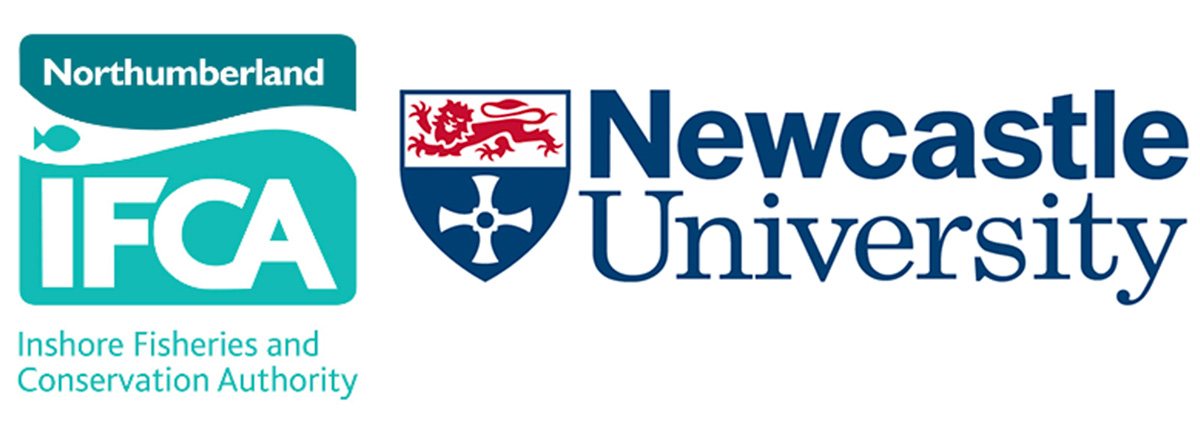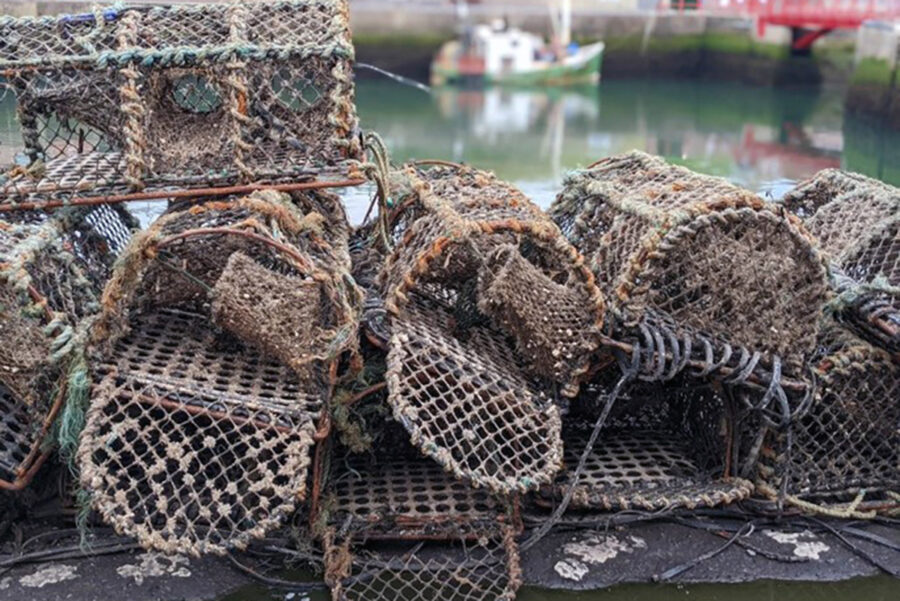“This article is a summary of work undertaken by Sarah Coulthard on behalf of Northumberland IFCA. We would like to express our appreciation to Sarah and all those stakeholders who gave their time during the interviews. It provides a valuable insight into the fishing industry throughout Northumberland. Analysis of the data collected will be immensely valuable to our team in our response to the national FMP consultation.”
Mark Southerton, chief officer, NIFCA
Earlier this year, Northumberland IFCA (NIFCA) commissioned a 16-week project to explore fishers’ ideas about what should appear in a national shellfish management plan. Enabled by additional Defra funding to prepare for the FMP consultation this summer, the project was motivated by concern over a lack of inclusive engagement of many of the Northumberland potters in national FMP discussions, recognising that fishers are often unable or unmotivated to engage via available national platforms.
It was also an opportunity to explore the quality of fisher contributions when given adequate space and time to act as co-designers of FMPs, rather than commentators on pre-prepared plans. We worked around fishing patterns, spending several days in harbours conducting in-depth one-to-one interviews, and interviewed 60% of active permit holders in the NIFCA district.
Not everything in the FMP chimed with Northumberland’s potters. Some key findings are summarise below.
1. Improve existing rather than introduce further management measures
The general feeling was that existing management is sufficient for the NIFCA district, and that current lobster landings are good. This is supported by the NIFCA Lobster and Crab 2023 Status Reports. These contradict the findings of the national FMP consultation, which states that stock sizes for Northumberland are considered ‘well below MSY’ and their exploitation rates are ‘very high’. Rather than bringing in additional measures, many fishers felt that a focus on improved enforcement of existing measures would be more beneficial.
2. The enforceability of management measures is important
Fishers generally agreed that rules need to be enforceable. Many mentioned the prohibition of landing berried hens, leading to the scrubbing of eggs, which can be a real source of conflict within fisheries. This frustration is particularly acute in the Anglo- Scottish border region as landing of berried hens remains legal in Scotland.
There is some support amongst fishers for the berried hen ban, but this is largely based on a desire to protect eggs and breeding stock; when asked whether it is effective, 86% of fishers who responded said no.
V-notching, however, retains widespread support. A v-notched lobster is easily detectable and therefore enforceable, and fishers generally support a reintroduction of this scheme. Voluntary v-notching of lobsters seems embedded within fishing culture in Northumberland. Fishers also call for increased enforcement and checks for v-notched lobsters in wholesaler tanks, not just on boats and at point of landing.
3. MLS is enforceable and effective, but increasing it may have significant economic impacts
The current minimum landing size (MLS) of 87mm for lobster was deemed sufficient by most fishers. There is support for greater enforcement of the existing MLS, and successful prosecutions by the NIFCA are widely celebrated by the fishing community.
Eighty percent of respondents questioned the need for an increase in MLS, alongside concerns about the impact of an increased MLS on economic viability (55% of respondents), especially among smaller boats in the south of the district where lobsters are generally smaller.
Since 2012, NIFCA has collected biometric data as part of ongoing monitoring of local lobster populations. It estimates the impact of the proposed change to a 90mm MLS would reduce the total landed catch in the first year by an average of 23% with a value of £1.16m, and a mean loss per active vessel of £15,000. However, after the first year, the impacts are less certain.
There was some recognition from fishers (20% of respondents) regarding the value and necessity of an increased MLS, but most also mentioned a need for more evidence about the length of time before stock benefits would be realised, and the need to phase in any increase. Some concerns were also expressed over an increase in MLS fuelling the black market for undersized lobster.
Importantly for the NIFCA region, an increased MLS to 90mm for lobster in England without a parallel increase in MLS in Scotland (currently 87mm) will cause considerable conflict in the border region, exacerbating existing tensions regarding different laws.
4. Pot limitation and managing effort beyond 6nm is vital
Pot limitation was seen by many fishers as an important management tool, but with an acknowledgement that this too can be difficult to enforce, and that various means of rule-breaking exist. When asked whether the current pot limitation measure is working well, 70% of respondents felt it was not (often lamenting that the 800 limit per boat is too high), but also expressing gratitude that at least some effort limitation exists in the district.
There is widespread concern about lack of pot limitation beyond 6nm and unregulated fishing in this area. When asked about the single biggest change fishers would like to how the fishery is managed, reducing the number of pots in the water (especially offshore) was the most frequently cited.
The only area of significant disagreement amongst fishers revolves around how limitation would be applied, and whether this should be a limit on number of pots per person, or per boat, and what limits should apply.
The polarised views regarding the ‘fair’ design of pot limitation, between ‘living within your means of 800 pots per boat’ and ‘being able to economically develop’ with 800 pots per person, represents a schism in the fishing community, frustrating relations between fishers around accusations of envy, greed and blame for overfishing.
However, most fishers seem to share a common value about retaining and protecting smaller boats; many started careers in smaller boat themselves, and recall the practices of their ancestors. This could be an important shared value upon which to build consensus for management that seeks to protect the smaller vessels.
5. Opinions are divided about seasonal closures
There was an almost even split about the use of seasonal closures to protect stocks. There was some recognition regarding the value of historic seasonal ‘rest periods’, when fishers would have taken pots ashore to avoid storm damage, and many would have turned to netting (including cod, saithe, mixed flatfish, and salmon and sea trout when in season) as an alternative income.
High numbers of modern creels mean that gear is now usually left in the sea all year around. This is also to avoid displacement from grounds by other fishers. The explosion in grey seal numbers (a four-fold increase over the last 20 years) has made netting an unattractive alternative. Loss of diversification of fishing options and eroded resilience of the fishery overall is recognised as a significant challenge for management.
The discussions also delved into views on matters such as engagement, and found a clear disconnect between ‘feeling informed about’ management and ‘having influence over’ management decisions. Whilst a high number of fishers (69%) felt sufficiently informed about management, this rapidly declined when it came to feeling influential (28%).
This difference (which we might call the ‘engagement gap’) can be a useful indicator by which to track progress of co-management and partnership, and clearly calls for more substantive engagement of fishers as co-designers of solutions.
As one fisher said: “It would be better if we were more involved in designing the solutions, not just Defra coming and saying: ‘We have this, do you agree or not?’”
Overall, the research clearly evidences the value of one to one engagement with fishers who, when given adequate time and space to offer their ideas and reflections, can contribute significantly as co-designers
of fisheries management, and welcome the opportunity to do so. This report will be presented to Defra through the FMP consultation process.
This article was written by Sarah Coulthard from Newcastle University.
For more up-to-date and in-depth reports on the UK and Irish commercial fishing sector, subscribe to Fishing News here or buy the latest single issue for just £3.30 here.
Sign up to Fishing News’ FREE e-newsletter here.








